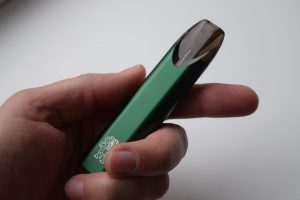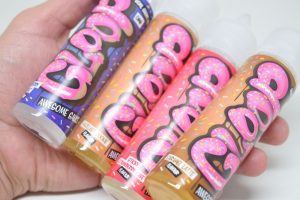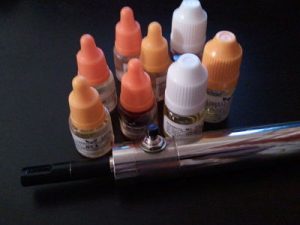Data Suggests That E-Liquid Flavors Aren’t Driving Youths to Vaping
E-cigarette opponents have long been advocating for a federal e-liquid flavor ban, claiming that enticing flavors are one of the main causes of the “vaping epidemic that is addicting a generation of kids”, but hard data paints another picture.
 According to a number of youth surveys over the past three years, e-liquid flavors are far from the main driver pushing young Americans to try vaping. A “research letter” recently published in the JAMA Networks online journal asked 1,129 youths aged 14 to 24 a series of questions about the JUUL, currently the most popular electronic cigarette on the US market. One of these questions was “Why do you think people your age juul?” to which 62.2 percent of respondents cited social reasons (“because it’s trendy or cool”), while only 4.7 percent mentioned flavors as a reason for using a JUUL.
According to a number of youth surveys over the past three years, e-liquid flavors are far from the main driver pushing young Americans to try vaping. A “research letter” recently published in the JAMA Networks online journal asked 1,129 youths aged 14 to 24 a series of questions about the JUUL, currently the most popular electronic cigarette on the US market. One of these questions was “Why do you think people your age juul?” to which 62.2 percent of respondents cited social reasons (“because it’s trendy or cool”), while only 4.7 percent mentioned flavors as a reason for using a JUUL.
Now, I know what you’re thinking, this is just one survey and it’s a relatively small one. You’re absolutely right, but according to an article by Lindsey Stroud, an ardent advocate for tobacco harm reduction, this is far from the only youth survey to come up with this conclusion.
In 2019, the Vermont Youth Risk Behavior Survey, which was conducted in 66 high-schools around the state and gathered over 18,600 responses from youths in grades 9 through 12, found that only 10 percent of respondents cited flavors as the primary reason for vaping. The 2019 Youth Risk Behavior Survey for Rhode Island paints a similar picture, with only 4. percent of respondents citing the availability of various flavors as the reason they tried vaping.
These findings are consistent with the results of similar surveys conducted back in 2017 in Connecticut and Virginia, with flavor availability ranking low on the list of reasons why youths try vaping.
“These results are significant because as of the beginning of May, three states (Massachusetts, New Jersey and Rhode Island) have flavored vapor product bans in place, and New York’s flavor ban goes in effect on May 20,” Stroud wrote in an article for Inside Sources. “The bans were enacted due to an erroneous claim that flavors are the reason youth use e-cigarettes and vapor products, but the data continues to discredit that notion.”
Organizations like Tobacco-Free Kids have long been campaigning for an all-out e-liquid flavor ban, citing the safety of America’s youth as the ultimate goal, but data shows that banning flavors is a misguided policy based solely in ideology, not facts. Research has shown that adults like enticing flavors, with many relying on them to stay off tobacco cigarettes, so it’s definitely not a kids thing.
The truth is that e-liquid flavors could play a key role in a tobacco harm reduction strategy, but legislators and many public health experts choose to see them as a threat to American youths, even though the data shows otherwise. Protecting our youths from nicotine addiction is a noble goal and one that should not be ignored, but as Iowa Attorney General Thomas J. Miller points out, it shouldn’t be done at the expense of millions of adult smoker lives.
There are ways of keeping our kids safe without having to risk pushing adults back to smoking. Age restrictions and stronger enforcement of marketing to youths could be very effective, and they wouldn’t affect the people using vaping as a less dangerous alternative to tobacco smoking. A flavor ban is like trying to save the young saplings in a forest by burning down the full-grown trees, it just doesn’t make sense.
















